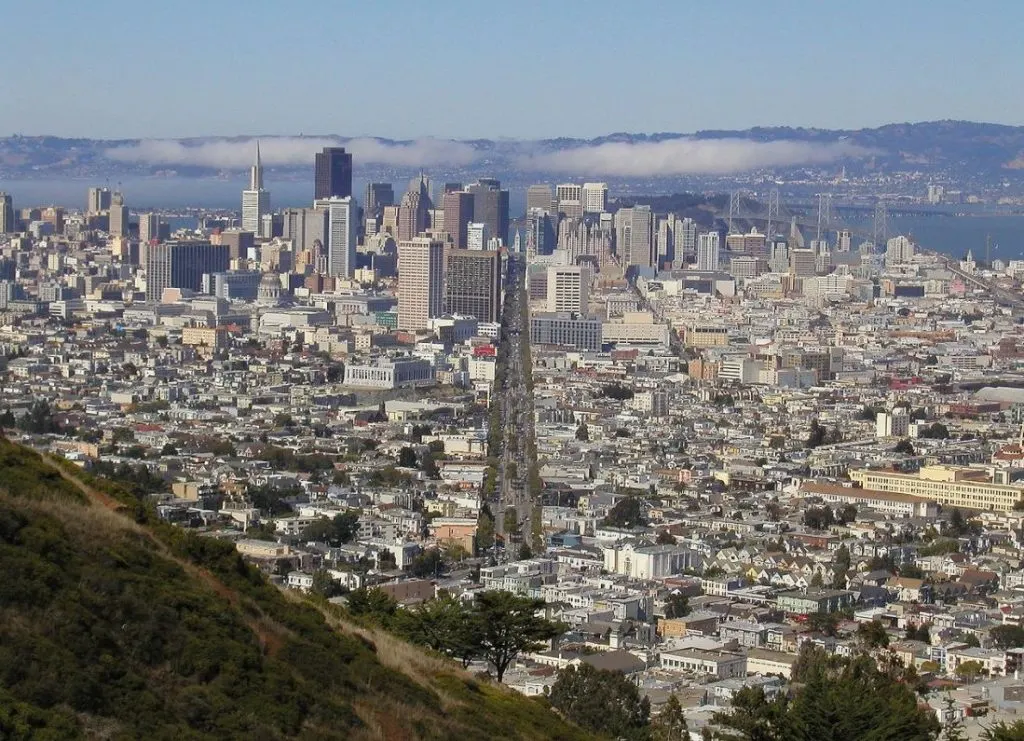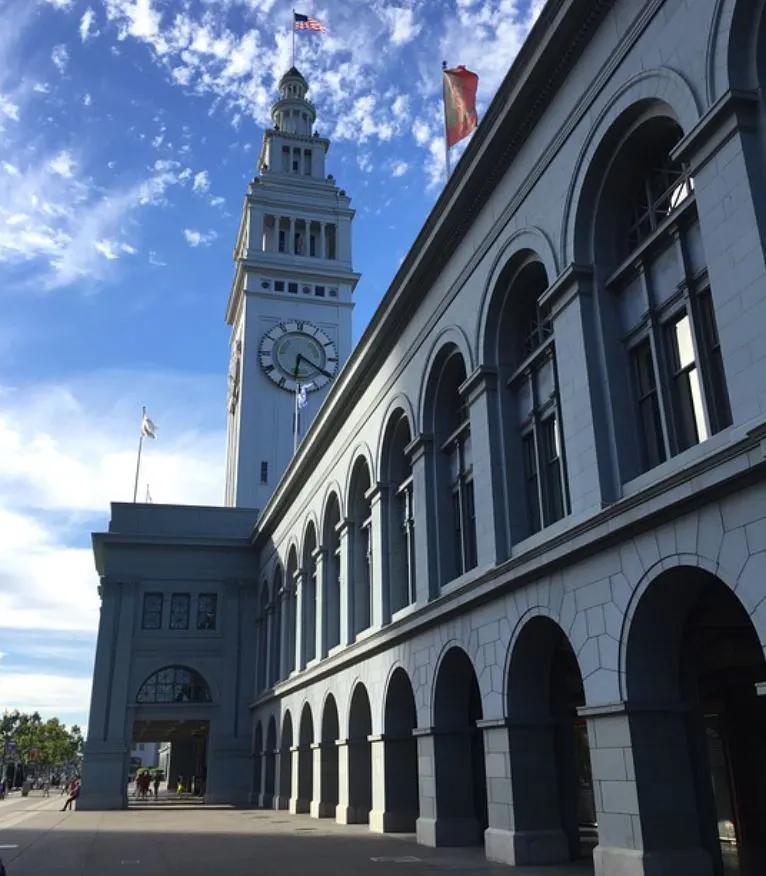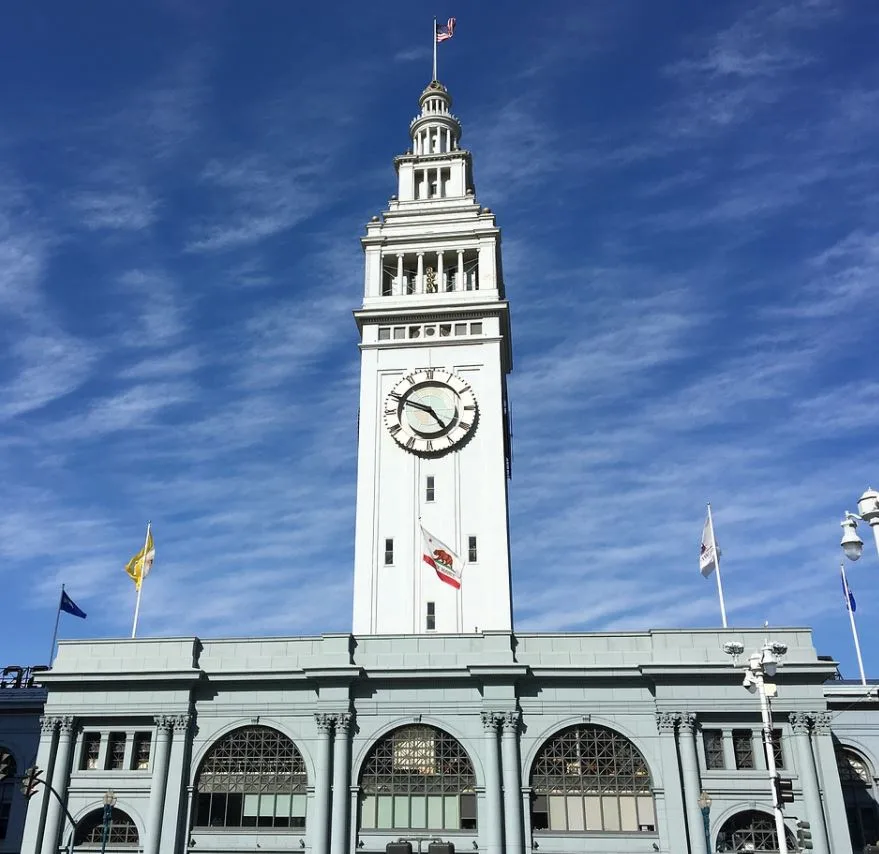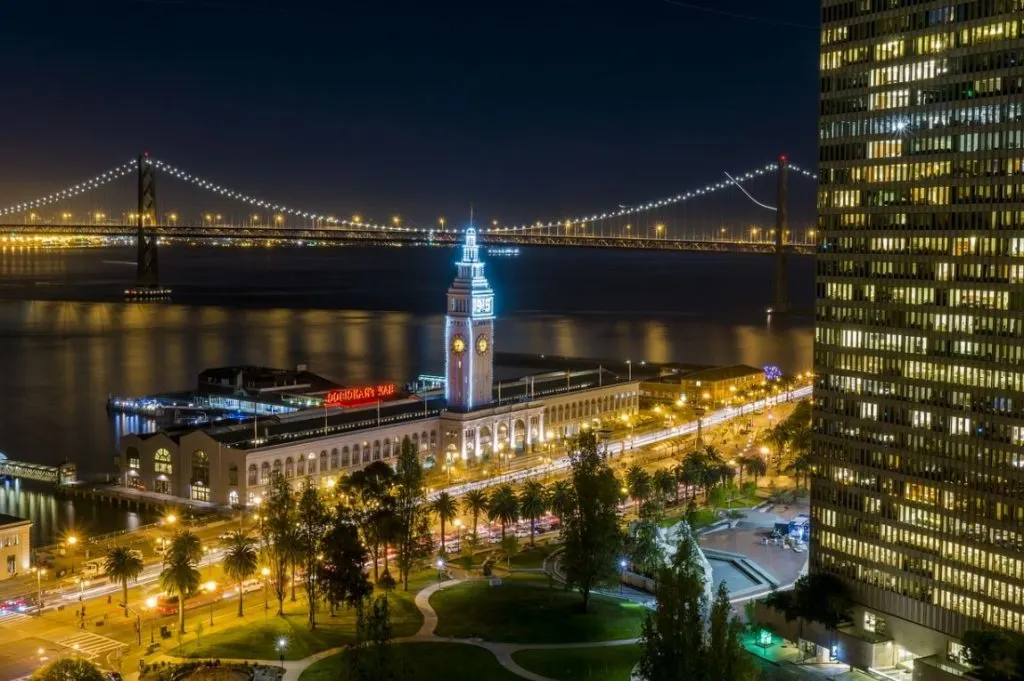One of the most fascinating buildings in San Francisco was once the biggest construction project in the city in the late 19th century and survived quite a few intense natural calamities.
In this post, you can discover some interesting San Francisco Ferry Building facts, a landmark in California with an interesting story to tell.
1. It’s located on the eastern waterfront of the SF port
The SF Ferry Building is one of the most iconic landmarks in the city. It’s an immense structure that features a massive clock tower in its center and has been a remarkable feature of the San Francisco skyline since the late 19th century.
As the name suggests, it was constructed to be used as the main transportation transit terminal for the fast-growing ferry industry in the late 19th and early 20th centuries in the city.
It’s situated on the eastern waterfront of the San Francisco port, an area referred to as the “Embarcadero.” That’s just to the east of the San Francisco Financial District which features famous skyscrapers such as the Transamerica Pyramid and the Salesforce Tower.

2. The building’s tower can be seen all the way from Twin Peaks
One of the most fascinating San Francisco Ferry Building facts is that it’s located right at the end of one of the city’s main thoroughfares called Market Street.
This major avenue in the city runs all the way to the Castro District in Eureka Valley near Twin Peaks, which means that you can get a clear view of the building’s clock tower from this elevated position, an amazing sight to behold!

3. It was the largest construction project in SF in the late 19th century
The SF Ferry Building is huge as the Great Nave of the building has a total length of 660 feet (200 meters). The construction of this building started in 1892 and was completed by 1898 which made it the largest construction project in the city at the time.
The building was designed by Arthur Page Brown (1858-1896), an architect originally from the New York area who had traveled to Europe in 1883 and 1884.

In Paris, he became fascinated with the Beaux-Arts architectural style which was influenced by Neoclassical and Renaissance styles. That’s why the main building is basically modeled on the arched arcades that can be found throughout Europe.
Unfortunately, Brown died from injuries suffered in a horse incident in 1896 while the Ferry Building was still under construction, so he never saw his ultimate masterpiece completed.

4. The building survived 2 major earthquakes in the city
Just 8 years after the Ferry Building was finished, the city was pretty much completely flattened by the “1906 San Francisco earthquake.” This calamity was followed by fires that took 3 days to put out throughout the city.
Remarkably, the Ferry Building only suffered minor damage and the clock tower had remained intact as well, unlike just about all other major buildings, including for example the San Francisco City Hall.
The same happened in the late 1980s in an event referred to as the “1989 Loma Prieta earthquake,” which means the Ferry Building and its clock tower are the original structures built in the 1890s!

5. It was once the second-busiest transportation terminal in the world
The Ferry Building instantly became an extremely busy transportation hub for people who wanted to hop onto a ferry. The original wooden structure that was completed in 1875 was completely outdated just a few decades later and had to be replaced.
By the 1930s, about 50,000 travelers arrived at the Ferry Building every day, which was the main reason that more efforts were done to finally build bridges. This eventually happened with the completion of the Bay Bridge in 1936 (which is located just nearby), and the Golden Gate Bridge in 1937.
One of the most amazing San Francisco Ferry Building facts is that it ended up being the second-busiest transportation transit terminal in the world, just second to London’s Charing Cross Station.

6. The building was completely repurposed in the 1950s
Because the construction of the bridges gradually replaced ferry traffic with road and rail traffic, the Ferry Building was pretty much redundant by the 1950s. That’s why serious efforts were taken to ensure this historical landmark in the city still served a purpose.
The interior of the building was completely renovated and turned into office spaces. This was followed by the construction of the Embarcadero Freeway in the late 1950s which pretty much ran right in front of the building, reducing its visibility. This freeway was flattened by the 1989 earthquake and demolished shortly after.
Needless to say that not everybody was pleased with this turn of events, so another renovation took place in the early 2000s and the historic character of the building’s interior was partially restored. The ground floor, which originally served as the baggage handling area, now is a popular public food marketplace.

7. Its clock tower was modeled on a famous tower in Spain
Because the Great Nave of the Ferry Building has a length of 660 feet (200 meters), it’s hard to imagine that the clock tower of the building is as tall as it is. This tower stands 245 feet tall (75 meters) tall and the diameter of the 4 clock dials is 22 feet (6.7 meters) which is pretty huge!
The design of this clock tower was based on that of the Giralda in Seville, the iconic clock tower of Seville Cathedral in southern Spain.
This amazing tower isn’t mainly decorative as well, because apart from the 4 clock dials, it also features a set of horn loudspeakers that play portions of the Westminster Quarters every full and half hour. This tune was named after the Palace of Westminster in London which is its place of origin.

8. The building is listed on the National Register of Historic Places.
Because of its fascinating design, remarkable history, and prominent location at the end of Market Street in San Francisco, the Ferry Building was designated as a San Francisco landmark in 1977.
Just a year later, on December 1, 1978, it was also added to the list of National Register of Historic Places in the United States.
Even though it doesn’t dominate the city’s skyline as it once did because of the countless skyscrapers that were built nearby, it’s still one of the most amazing landmarks in San Francisco, especially at night when the clock tower is lit up!

